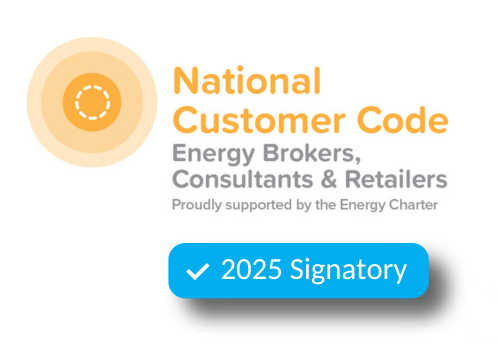24 January 2023
What’s the difference between electricity spot market and futures market rates?
Blog
Electricity spot prices reflect the current market cost determined by supply and demand, whereas electricity futures prices predict the cost of electricity at a future date.
Understanding the distinction between these two pricing models is fundamental for effective electricity market analysis.
This article focuses on the National Energy Market (NEM) member states of Australia which include New South Wales, ACT, Queensland, South Australia, Tasmania and Victoria.
The NEM is where generators sell electricity to large users and resellers (ie. energy retailers). There are two main marketplaces that buyers and sellers focus on when trading wholesale electricity: the spot market and the contract market – also known as the futures market.
How the spot market helps keep the lights on
The energy system is managed by the Australian Energy Market Operator, which has the tricky balancing act of matching demand and supply at all times.
If supply does not meet demand at all times and frequency drops, the grid may incur severe damage, which would cause electricity blackouts.
The mechanism that AEMO uses to match supply to real-time demand and consumption by Australian homes and businesses is the spot market. The spot market is determined by demand and supply.
The spot price tells generators what the actual demand is at any given time. Spot prices can vary from negative pricing when there is a supply glut to the market cap of $15,500 per MWh (for the period 01 July 22 to 30 June 23) during unexpected power generation outages and shortfalls.
When the spot price increases, generators increase their output to supply the needed power.
More expensive rapid generators such as high-peaking gas plants, pumped hydro, or fast-response batteries may jump into the equation when the spot price is high.
When the spot price dips, expensive generators will power down because it is not financially viable for them to produce electricity.
Spot prices are determined every five minutes under the five-minute settlement rule. Prices are usually low in the early morning hours before people wake up and go about their daily business.
They ramp up in the morning as businesses start to open and then dip back down (often into negative territory) between 10.30 am and 5 pm as rooftop solar kicks in when the sun is shining.
Prices tend to spike in the evenings as the sun goes down, people settle into their home routine, and hospitality venues continue their operations.
This phenomenon is known as the Duck Curve.
Each day, every generator wanting to sell electricity in the NEM must submit a bid, detailing how much energy they would like to offer, with the capacity/volume offered in ten different price bands. These bids are submitted to the AEMO.
The AEMO receives all bids at 12:30 PM the previous day. All bids are compiled into a bid stack, which compares bids from all generators and stacks them from cheapest to most expensive.
Dispatch intervals are five minutes long and generators are dispatched for each dispatch interval based on the bid stack. AEMO calculates how much generation is needed to meet demand and generators are dispatched from cheapest to most expensive.
The vast majority of households and businesses are not charged spot prices for their electricity usage.
Retailers offer a retail contract or a plan” to supply electricity over a fixed period.
Some large businesses, manufacturers, and factories can take advantage of spot pricing if they have the flexibility to ramp their operations up or down when it is favourable.
Small businesses buy electricity from their retailer, not the wholesale market.
How the futures market helps keep prices stable for customers
Retailers buy electricity at a fixed price through hedging contracts. This is done to manage financial risk and to have more certainty over wholesale energy costs.
These contracts fix the price that retailers pay over a year or more. The futures pricing system allows retailers to offer customers stable retail prices. It also allows businesses to forward purchase energy on the wholesale market at a fixed price for a fixed period.
When a commercial or industrial (large) energy customer enters into a fixed-rate retail electricity supply agreement, the customer is essentially entering a forward rate agreement at an agreed fixed rate. The retail rate on offer to the customer is simply the retailer’s wholesale cost plus a margin to cover their costs and make a profit.
Entering a fixed-rate energy supply agreement with a retailer is the most common way in which commercial and industrial electricity customers hedge against spot market volatility. By doing so, the customer is avoiding the pricing uncertainty that comes from a volatile spot market in which electricity rates range from a negative value to $15,500 / mWh (or $15.50 / kWh).
Leading Edge Energy can assist your business in the procurement, analysis and comparison of current commercial & industrial electricity contracts. The service is free and you are under no obligation to accept an offer from us. Click Here to get started.
Wholesale contracts allow generators to finance their operations
In order to finance new generation assets, generators need revenue streams that allow them to access funding from banks and other institutions.
They agree to fixed-price contracts to supply specified quantities of power to retailers. If they do not meet the supply quota, they are liable to pay for under-delivery at spot prices at this time. This liability is the difference between the contract price and the spot price for every MW in every trading interval they are short.
The higher the spot price when a generator is short, the higher the financial penalty the generator incurs.
Because of this liability, generators usually hold back generation capacity to ensure they can deliver on the contract quantities.
Compare commercial & industrial energy offers here
The spot and contract markets work together
Spot and contract markets work together to deliver the required quantity of electricity hour to hour and over longer periods.
Wholesale contract prices are broadly based on expectations of average future spot prices. If supply conditions are expected to be tighter in the future, supply and demand for contracts will get tighter, raising contract prices – which, in time, flow through to retail contract prices.
Wholesale contract prices provide important signals to the market about how much generation needs to be available, of what type, and where it needs to be located.
Compare commercial & industrial energy offers here
Network demand charges can be a heavy burden for large business energy users but they don’t have to be.
Leading Edge Energy can help your C&I business determine opportunities to reduce the impact of network demand charges on your electricity bills. Let’s explore all the possibilities for saving money on energy – sign up for an obligation-free consultation with our team.
We source, analyse, compare and rank commercial, industrial and multi-site energy quotes. Obligation Free.
Chat with one of our experienced consultants today and get the insights your business needs to help manage the risks associated with volatile electricity and natural gas markets. Our energy procurement service is obligation-free and provides a time-saving way of securing lower energy rates from our panel of energy retailers.

Get advice from our Energy Management Consultants
Are you ready to save on business energy costs?
Get Started
Leading Edge Energy is proud to be a signatory of the National Customer Code for Energy Brokers, Consultants and Retailers.